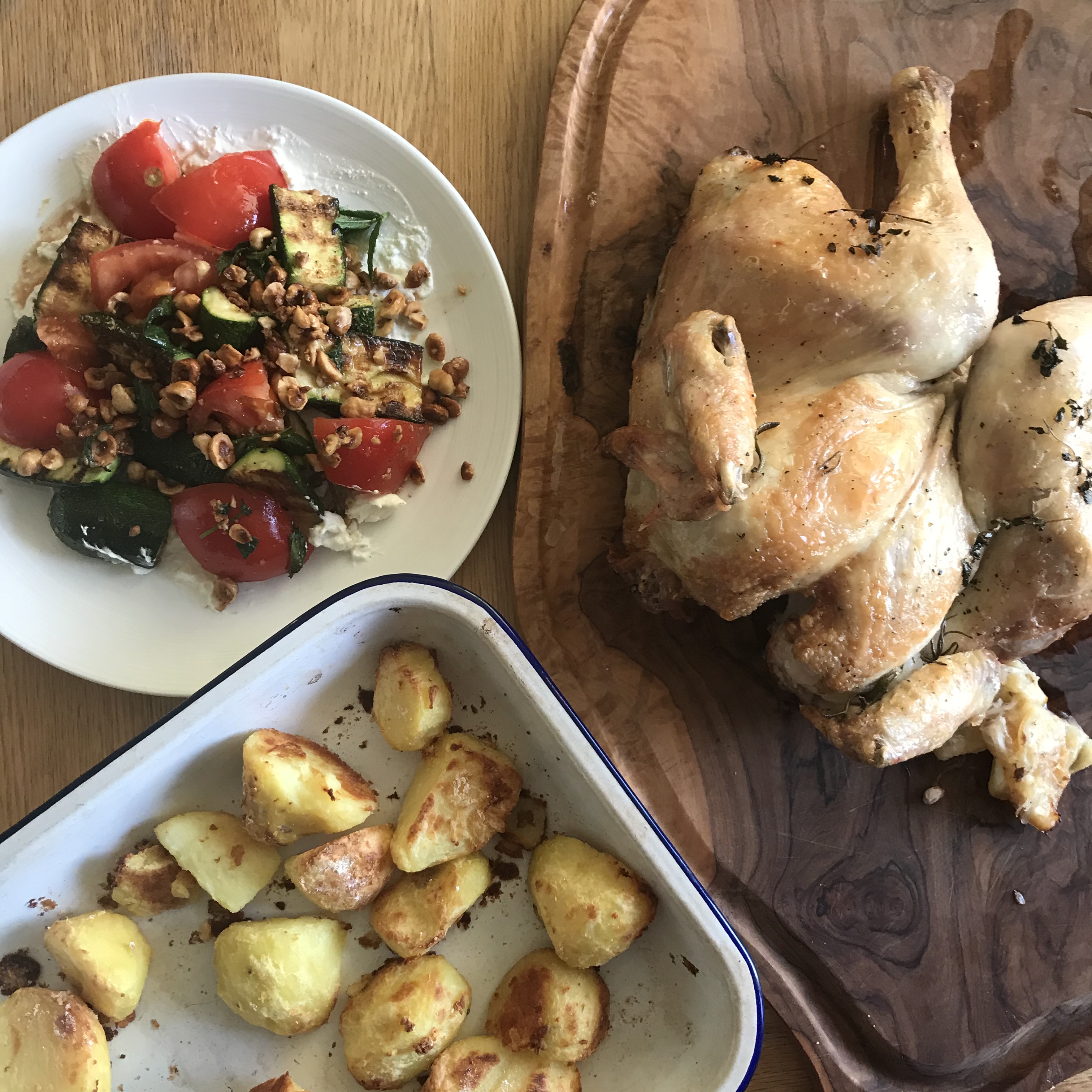My friend Mel has been cooking through the Dishoom cookbook with her hubby, and discovered their ‘Gunpowder potatoes’. They aren’t the simplest as you need a very particular spice mix, which arrived in the post a few days after Mel had told me about them… I was very grateful and keen to try! I haven’t included that recipe here as it really is quite elaborate, and ingredients aren’t particularly easy to get hold of these days. However, I often get inspired by a single ingredient or dish, and it was definitely the case this weekend. I decided I would make a bit of an Indian feast. I have quite a few curry dishes I am fond of making – saag paneer, or a simple chicken curry with loads of veggies thrown in. I occasionally make my own paste but usually rely on Patak’s!
However, seeing as I have so much time these days, I decided to experiment, and decided to make lamb samosas, red lentil dhal, Mel/Dishoom’s gunpowder potatoes, and tandoori paneer with veggies. Some real discoveries in those recipes, and ones I would definitely do again! I am just going to go through the samosas here as I just followed existing recipes for the others – but I can’t recommend them highly enough.
Red lentil dhal – super healthy, quick and tasty. And vegan, as it is made with coconut milk. I know there are a million dhal recipes out there, but this was the first time I’d given it a go, and I was really pleased. Give me a bowl of this and a naan bread any day…

Mel / Dishoom’s Gunpowder potatoes – I didn’t have the coriander or fresh green chillies, and used lemon instead of lime – but these were a total delight! And also reasonably healthy. The kebab masala is what Mel sent me in the post, recipe here.
Paneer and veg tandoori-ish – This was super simple. I cubed 250g paneer and my veg (1 onion, 1 pepper and 1 courgette), and then mixed them through with 2 tbsp greek yoghurt (any plain yoghurt will do) and 2 tablespoons of curry paste (good old Patak – I used Korma paste but any will do). I left it to marinade for a couple of hours, and then put it in the oven for 30 minutes at 180. Simple, very flexible (you could use any veg, and could swap the paneer for chicken if you fancy, or make it more substantial with butternut squash or sweet potato – just adjust the cooking time).
And last but not least – my favourite part of the feast – lamb samosas! Loosely based on a recipe I found on BBC Good Food, but with a few adaptations. I will admit they didn’t look very pretty as my samosa folding skills aren’t up to much, but they tasted amazing. In fact, the lamb mix could easily be eaten on its own with some rice or a naan bread. Here goes. And my apologies to any Indian cooks out there who will probably be horrified at this adaptation!
Lamb samosas – serves 4
Ingredients
- 400g lamb mince
- 2 tbsp curry paste – I used Patak’s Korma, but if you prefer more of a kick, go for one of the spicier ones.
- 1 carrot
- 1 small onion
- 2 handfuls frozen peas
- 2 tbsp mango chutney
- filo pastry (shop bought!)
- oil, salt and pepper
Method
- Start by making the filling. Heat a tbsp of oil in a frying pan and brown your lamb mince over a med/high heat. Don’t move it around the pan too much so you get some browning on the bottom, then make sure it is cooked through.
- Grate the onion and the carrot on a coarse grater, and add to the mince. Cook for a few minutes until they are effectively dissolved. Add the curry paste, stir through, and cook for a few minutes.
- Remove from the heat and put the mix into a heatproof bowl. Add the peas and mango chutney, and mix well. Put aside to cool.
- Take your filo pastry out of the fridge, and lay out a sheet in front of you. Fold it in half, and put a tablespoon of the lamb mixture at the top. Fold over the side so it makes a triangle, and continue folding over until you have used up the strip of filo. I will be honest here – I ended up making slightly random parcels as I couldn’t get them to close properly! Whatever shape you end up with doesn’t really matter, it will still taste good…
- Brush your samosa/parcel with oil, and place on a baking sheet. Continue until you have used up all the filo/mince.
- Bake at 180 fan for 30 minutes, until crispy and the filling is piping hot.
- Enjoy with some cool raita or an extra dollop of mango chutney.
Swaps and alternatives
- Make it veggie – you could make veggie samosas with potato, more peas, and cubed onion/carrot, maybe cauliflower. Just make sure all the veg are cooked before adding the curry paste.
- You could easily use leftover roast lamb from your Sunday dinner for this, just cut/shred it and fry it lightly before adding the carrot, onion and paste.
- Paste – you could make your own of course, or use any other type you fancy. I wouldn’t go too spicy because you will lose the sweetness of the mango chutney.






